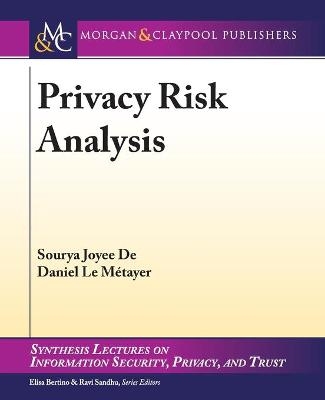
Privacy Risk Analysis
Seiten
2016
Morgan and Claypool Life Sciences (Verlag)
978-1-62705-425-6 (ISBN)
Morgan and Claypool Life Sciences (Verlag)
978-1-62705-425-6 (ISBN)
Provides an introduction to the basic notions, requirements, and main steps of conducting a privacy risk analysis. This book is an excellent resource for anyone developing and/or currently running a risk analysis as it defines the notions of personal data, stakeholders, risk sources, feared events, and privacy harms all while showing how these notions are used in the risk analysis process.
Privacy Risk Analysis fills a gap in the existing literature by providing an introduction to the basic notions, requirements, and main steps of conducting a privacy risk analysis.
The deployment of new information technologies can lead to significant privacy risks and a privacy impact assessment should be conducted before designing a product or system that processes personal data. However, if existing privacy impact assessment frameworks and guidelines provide a good deal of details on organizational aspects (including budget allocation, resource allocation, stakeholder consultation, etc.), they are much vaguer on the technical part, in particular on the actual risk assessment task. For privacy impact assessments to keep up their promises and really play a decisive role in enhancing privacy protection, they should be more precise with regard to these technical aspects.
This book is an excellent resource for anyone developing and/or currently running a risk analysis as it defines the notions of personal data, stakeholders, risk sources, feared events, and privacy harms all while showing how these notions are used in the risk analysis process. It includes a running smart grids example to illustrate all the notions discussed in the book.
Privacy Risk Analysis fills a gap in the existing literature by providing an introduction to the basic notions, requirements, and main steps of conducting a privacy risk analysis.
The deployment of new information technologies can lead to significant privacy risks and a privacy impact assessment should be conducted before designing a product or system that processes personal data. However, if existing privacy impact assessment frameworks and guidelines provide a good deal of details on organizational aspects (including budget allocation, resource allocation, stakeholder consultation, etc.), they are much vaguer on the technical part, in particular on the actual risk assessment task. For privacy impact assessments to keep up their promises and really play a decisive role in enhancing privacy protection, they should be more precise with regard to these technical aspects.
This book is an excellent resource for anyone developing and/or currently running a risk analysis as it defines the notions of personal data, stakeholders, risk sources, feared events, and privacy harms all while showing how these notions are used in the risk analysis process. It includes a running smart grids example to illustrate all the notions discussed in the book.
Sourya Joyee De Inria, Universite de Lyon, France.
Preface
Acknowledgments
Introduction
Terminology
Processing System
Personal Data
Stakeholders
Risk Sources
Feared Events
Privacy Harms
Privacy Risk Analysis
Conclusion
Bibliography
Authors' Biographies
| Erscheinungsdatum | 25.09.2016 |
|---|---|
| Reihe/Serie | Synthesis Lectures on Information Security, Privacy, and Trust |
| Verlagsort | San Rafael, CA |
| Sprache | englisch |
| Maße | 191 x 235 mm |
| Gewicht | 270 g |
| Themenwelt | Informatik ► Netzwerke ► Sicherheit / Firewall |
| Informatik ► Theorie / Studium ► Kryptologie | |
| ISBN-10 | 1-62705-425-1 / 1627054251 |
| ISBN-13 | 978-1-62705-425-6 / 9781627054256 |
| Zustand | Neuware |
| Haben Sie eine Frage zum Produkt? |
Mehr entdecken
aus dem Bereich
aus dem Bereich
Das Lehrbuch für Konzepte, Prinzipien, Mechanismen, Architekturen und …
Buch | Softcover (2022)
Springer Vieweg (Verlag)
34,99 €
eine Cyberstaatsanwältin ermittelt
Buch | Hardcover (2024)
Murmann Publishers (Verlag)
25,00 €


